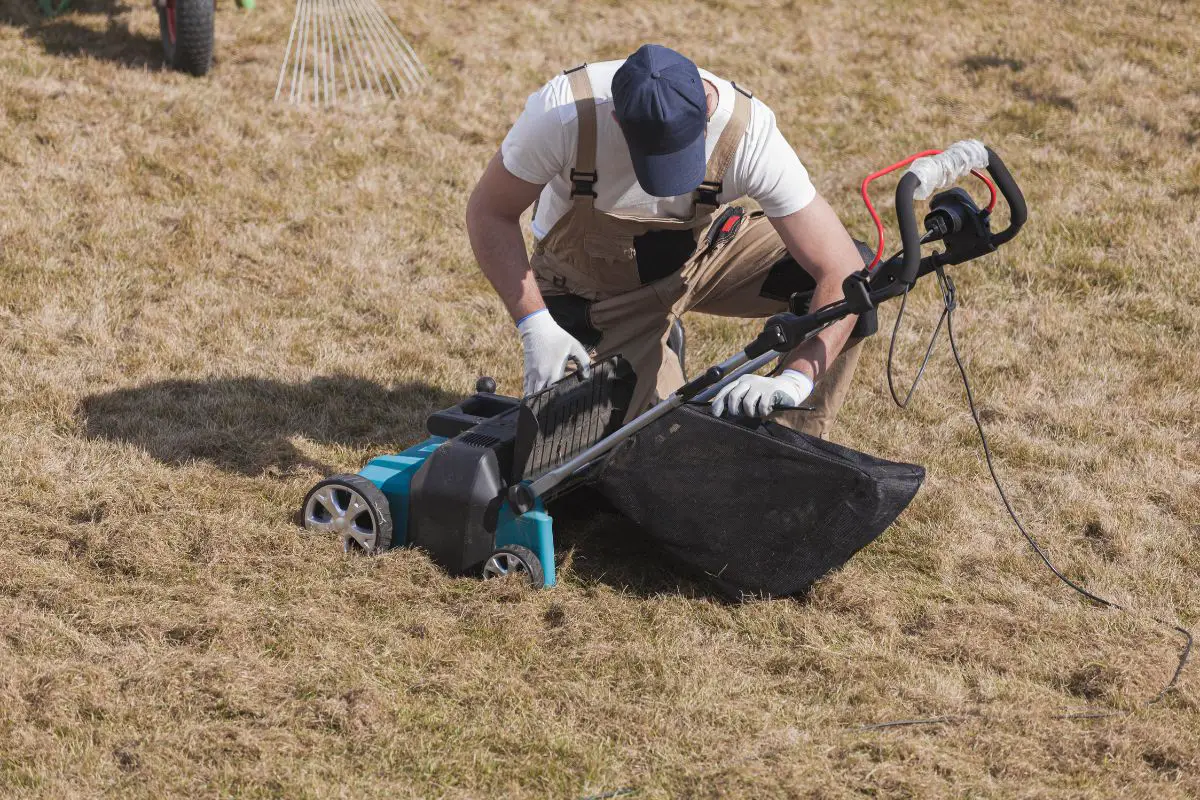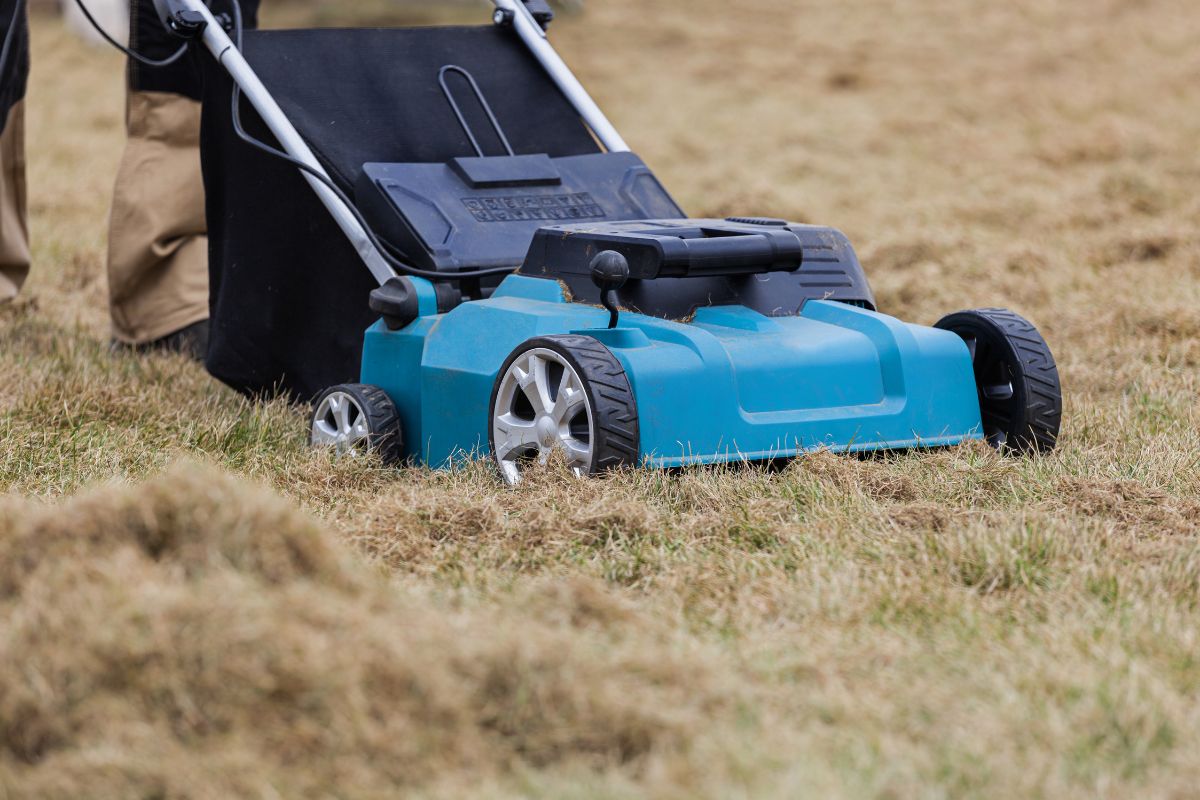A lawn scarifier is a gardening tool used to maintain a healthy and beautiful lawn. While many people are familiar with lawnmowers and other common lawn care tools, the lawn scarifier is often overlooked.
However, a lawn scarifier can be an essential tool for those who want to maintain a healthy lawn. It’s especially useful for lawns that are heavily used or are prone to moss or thatch buildup.
In this article, we will take a closer look at what a lawn scarifier is, how it works, and its benefits. We will also provide some tips on how to use a lawn scarifier effectively to keep your lawn in top condition.
Lawn Scarifiers
Let’s begin by explaining exactly what a lawn scarifier is. These handy tools can be manual, electric, or gas-powered and are used to scarify your lawn.
Scarifying your lawn is the process of removing unwanted organic matter, such as moss and thatch, from the surface of your lawn. It can sometimes be known as de-thatching your lawn as well.
It’s important to scarify your lawn as this debris can get compacted in your lawn. This will in turn stop your lawn from receiving the water and nutrients it needs as they can’t make their way down into the soil. You may find that your grass won’t take root properly and can even become suffocated.
Scarifiers work by having steel blades like knives attached to a rotating cylinder. The blades will not only remove the unnecessary thatch and debris but can also cut the soil at the same time.
This will help the soil aerate and receive the nutrients it needs. You can also use a scarifier to cut shoots of grass and this will encourage new growth to begin.
Why Is Scarifying Your Lawn Important?
It’s very important to scarify your lawn. If you allow debris such as dead grass cuttings and moss to sit on the surface of your grass, it will prevent your soil from receiving oxygen.
The debris can also prevent rainwater from draining away. Instead, the water will remain on top of your lawn, leaving it soggy. A soggy lawn can also become patchy and thin and this will lead to even more moss and weeds growing.
When Should I Scarify My Lawn?
The good news is that you don’t need to scarify your lawn regularly. This isn’t something that you need to do whenever you mow your lawn, for example, as it’s a task that only needs to be completed occasionally.
It’s best to scarify your lawn when the grass is growing well. If you scarify your lawn during periods when it’s growing more slowly, you run the risk of damaging your lawn.
This means that you shouldn’t be tempted to scarify your lawn during winter! Scarifying your lawn during the winter months will leave it exposed to the cold.
It’s generally accepted that the best times to scarify your lawn are during late spring and early fall. Don’t be tempted to scarify your lawn too early and tackle it in early spring when it’s just starting to grow again.
We recommend waiting for a day when your grass has received a little rain. You don’t want the grass to be soaking wet but it shouldn’t be bone dry, either.
The ideal situation is when the underneath is moist but the blades of grass are dry to the touch. If possible, pick a time when good weather is due to follow.
Scarifying your lawn can be very stressful for the grass and it will need a few days to recover. This is why timing is so important. By picking the right time of year and conditions, you can ensure that your grass recovers well and continues to grow.
Top Tips For Successful Scarifying

As we said in the last section, timing is everything when it comes to scarifying your lawn. However, there are some other factors that will make the process easier for both you and your lawn.
Use A Moss Killer
A couple of weeks before you plan to scarify your lawn, check to see if there is any live moss growing. You don’t want to scarify live moss as the process can spread moss spores across your garden and make the problem worse.
If there is some live moss, use a moss killer to kill it first. Be careful to follow the instructions and ensure that the moss is dead before you use your scarifier.
Mow Your Lawn
It’s easier to scarify a lawn that has been recently mowed. We recommend mowing your lawn around a week before you plan on scarifying it.
It’s best to mow your lawn on a dry day and by mowing your lawn, you will make it easier for your scarifier to get to the soil.
Water The Grass
Grass that has recently received water is easier to scarify than grass that is dry.
If there’s no rain on the horizon and you want to scarify your grass, we recommend watering your lawn a couple of days before you scarify it. Otherwise, wait for it to rain and scarify your lawn a couple of days later.
Do not scarify grass that is still wet! If you do, you run the risk of not only removing the thatch and debris but also pulling your grass out by the roots.
Scatter Some Grass Seed
Scarifying grass can be stressful so we always recommend scattering a little grass seed afterward. This is especially recommended if your lawn is a bit patchy and tired.
Adding some new grass seed will encourage your grass to grow thickly and discourage weeds.
Final Thoughts
In this article, we explained what a lawn scarifier is. We also gave hints and tips on how to effectively scarify your grass.


